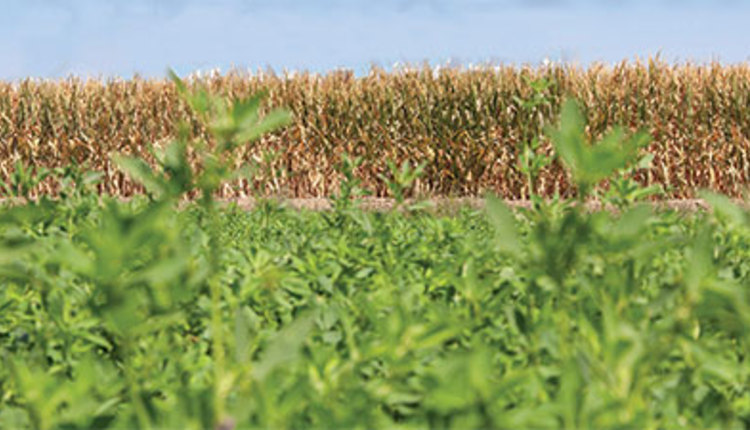Yield trends for the King and Queen of forages |
| By Joe Lauer |
|
|
 If corn is king, then alfalfa is the queen of forages. Corn silage and alfalfa complement one another well in forage cropping systems for dairy/livestock systems. Growing alfalfa in rotation with corn improves yields, lowers the risk of crop loss, reduces or eliminates the need for commercial fertilizer nitrogen and pest control inputs, spreads cropping and labor activities throughout the growing season, improves soil quality, and reduces cropland vulnerability to nitrate leaching, soil erosion, and nutrient runoff. Alfalfa and corn silage have complementary nutritional characteristics that benefit livestock when both are included in diets. Thus, growing and feeding alfalfa in conjunction with corn will improve the economic and environmental sustainability of crop and livestock production. It’s sometimes beneficial to look back and see where we’ve been in terms of yield progress for these foundational livestock feed sources. What we find is that corn silage and alfalfa have very different stories. National trends  Alfalfa hay yields have grown slower than corn silage. From 1930 to 1995, U.S. alfalfa hay yields grew 0.02 tons per acre per year (Figure 1), according to USDA’s National Agricultural Statistics Service (NASS). From 1996 to 2018, alfalfa hay yield declined 0.01 tons per acre annually. Average alfalfa hay and corn silage yields between 1996 and 2018 vary dramatically around the U.S. (Figures 2 and 3). Alfalfa yields are higher in the western U.S. than the Midwest largely due to irrigation. A similar trend is observed for corn silage. 
 The story for U.S. corn grain yields is well documented. Corn grain yields have been trending upward at the rate of 2 bushels per acre per year. The trend for U.S. corn silage and alfalfa yields are not as well known. The first USDA-NASS statistics for corn silage yield took place in 1919. For many years, corn silage was made from fields that had other production stresses. Only recently has corn silage become more of a priority due to larger dairy/livestock operations. During 2014 to 2017, U.S. corn silage yield ranged from 19.9 to 20.4 tons per acre. During the hybrid era (1930 to 1995) corn silage yields improved at the rate of 0.13 tons per acre per year (Figure 1). Many reasons are given for this dramatic increase, including development of improved, adapted hybrids; greater use of fertilizers and pesticides; machinery improvements for planting and harvesting; and improved management skills of corn silage growers. Corn silage yield has continued to climb during the “Biotech Era” (1996 to present) at the rate of 0.23 tons per acre annually. Biotech hybrids have insect and herbicide resistance traits that do well at “protecting” yield. In addition, end-users of corn silage have become much more diligent about management and silage yield and quality. County trends Between 1996 and 2018, statistics for alfalfa hay production were kept for 1,558 U.S counties (Figure 2 and 4). Of those 1,447 counties, 93 percent showed no significant yield progress. The most significant yield gains have occurred in Idaho, Montana, and Nebraska. 
Not all U.S. counties that grow corn silage have a positive yield trend (Figure 2). A total of 1,001 of 3,142 (32 percent) U.S. counties grow corn silage. Of the counties that grow corn for silage, 786 (79 percent) have a nonsignificant trend, indicating that corn silage yield has not changed between 1996 and 2017. Of the 215 (21 percent) U.S. counties that have increased corn silage yield, 59 (6 percent) have improved corn silage yield by more than 0.4 tons per acre per year, 129 (13 percent) have increased yield 0.2 to 0.4 tons per acre per year, and 27 (2 percent) have improved yields by zero to 0.2 tons per acre per year. Most yield increases have occurred in North Dakota, Minnesota, Pennsylvania, and Wisconsin. 
Corn silage yields will likely continue to rise as new adapted hybrids are developed and as managers prioritize and acquire skills for producing high-yielding, quality corn silage. Alfalfa hay, on the other hand, will need much breeding work done to improve yields in the future. This article appeared in the August/September 2019 issue of Hay & Forage Grower on pages 18 and 19. Not a subscriber? Click to get the print magazine. |
